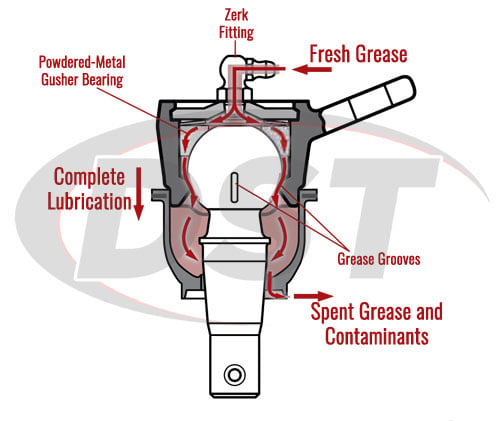Moog Ball Joints - Greasable Design
Problem Solver Ball Joints have a greasable design that allows the ball joint to receive new grease in every part of the ball joint and push out old grease or contaminates that can build up around the inner workings of the ball joint.
Designed for Easy Maintenance
Moog's Problem Solver Ball Joints have a system in place that allows them to receive new grease and expel old grease and debris that can accelerate the wear of a ball joint's smooth surfaces. A standard grease zerk fitting on the ball joint accepts new grease which is then pushed through the permeable Gusher Bearing, around the ball stud, and into the dust boot, carrying any old hardened grease and contaminates away from the working surfaces of the ball joint and out through the grease relief valve built into the dust boot.
Simply tapping the original ball joints is an option for adding grease but since those originals were designed as a sealed system the grease has nowhere to go. Without a permeable bearing or grease grooves the new grease won't be able to make its way to most of the inner surfaces. Aside from the tapping process being tricky and possibly damaging the ball stud surface, you don't get the full grease coverage of the Moog design which ensures a new layer of grease over all surfaces and an expelling of anything that may have entered the ball joint.

